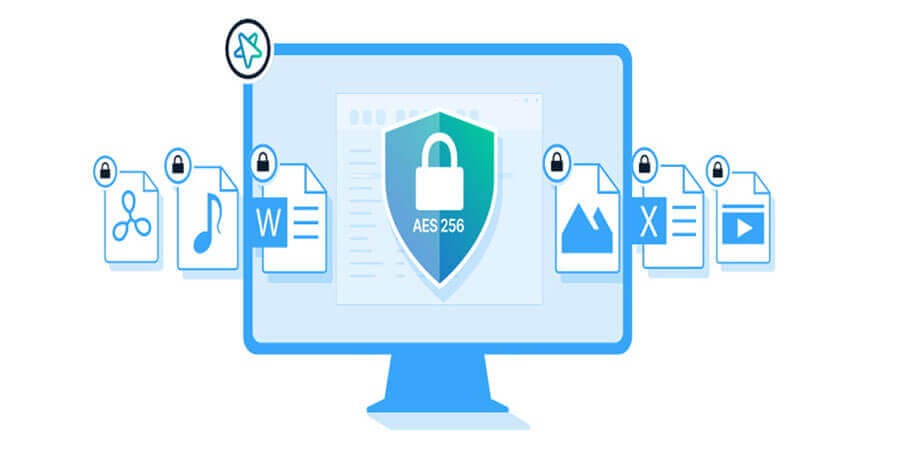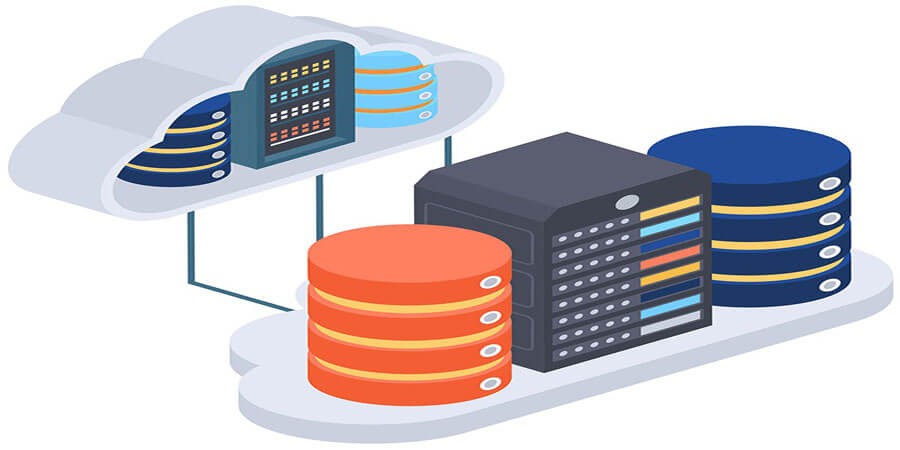

The Role of Encryption in File Security: A Beginner’s Guide
Introduction
From personal photos to business-critical documents, modern life and work rely on vast amounts of digital data that must be kept safe. But every time you send an email, upload a file, or store data in the cloud, your information is vulnerable to unauthorized access. Encryption is one of the most effective ways to protect sensitive data and ensure that only the intended recipients can make sense of it. Yet, the concept of encryption can seem daunting to those unfamiliar with cybersecurity.
This guide breaks down what encryption is, why it’s important, and how beginners can implement it to secure their files and communications. Whether you’re looking to safeguard personal documents or corporate secrets, understanding the basics of encryption will empower you to take control of your digital security.
1. Understanding Encryption: The Basics
At its core, encryption is the process of transforming readable data (plaintext) into an unreadable format (ciphertext) using a specific algorithm (cipher) and a key. Only those who possess the corresponding decryption key can convert the ciphertext back into the original plaintext. By locking away data in an impenetrable format, encryption prevents snoopers, hackers, and unauthorized third parties from accessing your information.
-
Plaintext: Human- or machine-readable data, like text, images, or entire files.
-
Ciphertext: Data that’s scrambled or encoded so it can’t be read without the proper key.
-
Keys: Unique strings (often long numbers and characters) used to encrypt and decrypt data.
-
Algorithm/Cipher: The mathematical method or formula that encrypts and decrypts data.
Real-World Example: When you shop online, your credit card details are encrypted before being sent to the server. If someone intercepts this data, they’ll only see scrambled information, not your actual card number.
2. Why Encryption Matters
-
Protecting Privacy
-
Without encryption, anyone intercepting your data—be it an email, chat message, or file—could read its contents. Encryption ensures that your personal communications and documents remain confidential.
-
-
Safeguarding Sensitive Data
-
Businesses often store customer records, financial data, and intellectual property. Encryption helps ensure these assets aren’t exposed if systems are breached.
-
-
Compliance with Regulations
-
Laws like GDPR (Europe) or HIPAA (U.S. healthcare) require the protection of personal data, and encryption is frequently a cornerstone of compliance.
-
-
Confidence in the Cloud
-
As more people rely on cloud storage, encryption assures that you—not the service provider or potential intruders—control who can access your files.
-
Note: Encryption is not a silver bullet; it’s one critical layer among many (firewalls, antivirus, strong authentication), but it significantly reduces the risk that data will be read if it falls into the wrong hands.
3. Symmetric vs. Asymmetric Encryption
Encryption methods are typically divided into two broad categories, each suited to different situations.
-
Symmetric (Secret-Key) Encryption
-
Uses the same key for both encryption and decryption.
-
Examples: AES (Advanced Encryption Standard), Blowfish, DES.
-
Pros: Faster and more straightforward for bulk data.
-
Cons: Securely sharing the key with another person can be challenging. If the key is intercepted, an attacker can both encrypt and decrypt.
-
-
Asymmetric (Public-Key) Encryption
-
Involves a public key (for encryption) and a private key (for decryption). You share the public key openly, but keep the private key secret.
-
Examples: RSA, ECC (Elliptic Curve Cryptography).
-
Pros: Easier to share data securely (no need to share private key). Often used for email encryption or secure websites.
-
Cons: Typically slower than symmetric methods. Often used alongside symmetric ciphers for practical performance.
-
Real-World Example: HTTPS on websites uses asymmetric encryption to exchange a secure “session key” for symmetric encryption. This hybrid approach leverages the best of both worlds.
4. Encryption in Everyday Life
Encryption isn’t limited to high-level cybersecurity experts; it’s already integrated into many daily tools:
-
Secure Messaging Apps
-
WhatsApp, Signal, and iMessage use end-to-end encryption so no one (not even the app provider) can read your messages.
-
-
Web Browsing
-
Any website starting with
https://employs Transport Layer Security (TLS) to encrypt data between your browser and the web server.
-
-
VPN Services
-
Virtual Private Networks encrypt internet traffic, hiding your activities from eavesdroppers on public Wi-Fi.
-
-
Cloud Storage
-
Many providers offer server-side encryption. Others (like Tresorit or Sync.com) use zero-knowledge encryption, meaning they can’t access your files, only you can.
-
Takeaway: You’re likely benefiting from encryption daily—understanding how it works helps you choose services that align with your privacy and security needs.
5. Common Encryption Algorithms
-
AES (Advanced Encryption Standard)
-
Symmetric cipher widely used by governments and industries.
-
Variants include AES-128, AES-192, and AES-256 (the numbers indicate key length; 256 is considered very secure).
-
-
RSA
-
Asymmetric algorithm used for secure data transmission.
-
Ideal for exchanging keys or small data, but can be slow for large volumes.
-
-
ECC (Elliptic Curve Cryptography)
-
Asymmetric approach offering similar security to RSA but with smaller key sizes.
-
Often employed for mobile and IoT due to better performance.
-
-
Blowfish/Twofish
-
Older symmetric ciphers. Blowfish is free and unpatented but overshadowed by AES. Twofish is a more modern variant.
-
-
ChaCha20
-
Symmetric stream cipher known for speed and security, used in some VPN protocols.
-
Pro Tip: For everyday encryption needs (e.g., local file protection, password managers), AES-256 is a strong and efficient choice.
6. File and Disk Encryption Tools for Beginners
-
BitLocker (Windows)
-
Built into some Windows editions, it can encrypt entire drives. Ideal for laptops.
-
Transparent to the user once set up, but ensure you store recovery keys safely.
-
-
FileVault (macOS)
-
Native full-disk encryption for Apple computers.
-
Encrypts startup disk, requiring a password or Apple ID for decryption.
-
-
VeraCrypt (Cross-Platform)
-
Free, open-source tool that creates encrypted containers or entire encrypted disks.
-
Flexible for advanced setups like hidden volumes.
-
-
7-Zip / WinRAR / Keka
-
Archive utilities that support password-protected ZIP or RAR files with AES encryption.
-
Good for encrypting smaller sets of files for sharing or short-term storage.
-
-
Cryptomator/Boxcryptor (Cloud-Focused)
-
Encrypt files locally before uploading to cloud drives (Dropbox, Google Drive, OneDrive).
-
Zero-knowledge approach: The cloud provider sees only ciphertext.
-
Choosing a Tool: Focus on ease of use, platform compatibility, and whether you need partial (container-level) or full-disk encryption.
7. Managing Encryption Keys and Passwords
Encryption strength isn’t just about the cipher; it also hinges on how you handle keys and passwords:
-
Use Strong Passwords
-
Long (12+ characters), random, and unique. Passphrases can be easier to remember (e.g., “Sunset!Laptop+Dolphin=42”).
-
-
Password Managers
-
Tools like Bitwarden, 1Password, or KeePass store credentials in an encrypted vault. Minimizes the risk of forgetting complex keys.
-
-
Hardware Security Modules (HSMs)
-
Specialized devices that store and protect keys. Overkill for most beginners, but common in enterprise.
-
-
Multi-Factor Authentication (MFA)
-
Combine a password with something you have (like a phone app or hardware token) or something you are (fingerprint, face scan) to thwart attackers.
-
Warning: If you lose your encryption key or forget your passphrase, your data becomes permanently inaccessible. Always back up keys in a secure place.
8. Public Key Infrastructure (PKI) and Certificates
In more advanced contexts, encryption relies on PKI, a system for creating, distributing, and revoking digital certificates:
-
Certificates: Digital documents that bind a public key with an entity’s identity (like a website or organization).
-
Certificate Authorities (CAs): Trusted third parties that verify identities and issue certificates (e.g., Let’s Encrypt, DigiCert).
-
Chain of Trust: Browsers or systems trust a CA’s root certificate; any site certificate signed by that CA is also considered valid.
Everyday Impact: When you see a padlock in your browser’s address bar, you’re trusting the site’s certificate to confirm authenticity. PKI ensures only the site owner can present that certificate.
9. Email and Messaging Encryption
Two main approaches can encrypt your emails and messages:
-
PGP/GPG (Pretty Good Privacy / GNU Privacy Guard)
-
Asymmetric encryption for emails and files.
-
Users generate public and private keys, exchanging public keys to send secure messages.
-
Integrates with clients like Thunderbird (Enigmail) or Outlook (special plugins).
-
-
End-to-End Encrypted Messaging
-
Apps like Signal, WhatsApp, and iMessage automatically handle key exchanges.
-
Only sender and receiver hold the keys; even the service can’t read messages.
-
Tradeoff: PGP requires more manual setup; modern messaging apps hide complexities but lock you into their platforms.
10. Encryption Best Practices for Cloud Storage
Storing files on Google Drive, Dropbox, or OneDrive is convenient, but how do you ensure real privacy?
-
Zero-Knowledge Providers
-
Sync.com, Tresorit, Proton Drive. They never see your plaintext files.
-
-
Client-Side Encryption Tools
-
Cryptomator or Boxcryptor let you encrypt files before upload. The cloud service stores only the ciphertext.
-
-
Strong Folder/Container Passphrases
-
Use a robust passphrase for any local encryption container.
-
-
Avoid Plaintext
-
Never store confidential data in plaintext on cloud services, especially if you’re not sure about their security policies.
-
Reminder: Some services claim to encrypt data but hold the keys themselves, meaning they could decrypt your files under certain conditions (like law enforcement requests or data breaches).
11. Encrypting Data on Mobile Devices
Smartphones and tablets hold personal photos, messages, payment info—making them prime targets if stolen or lost. Most devices now have built-in encryption:
-
iOS (Apple)
-
Encrypts data by default once you set a passcode or Face/Touch ID.
-
The Secure Enclave manages cryptographic operations.
-
-
Android
-
Newer versions encrypt data automatically when a PIN or password is set.
-
For older devices, check settings to enable encryption.
-
-
App-Specific Encryption
-
Messaging apps (Signal, WhatsApp) use end-to-end encryption.
-
Secure vault apps like Keepass2Android store passwords in an encrypted database.
-
-
Remote Wipe
-
Both iOS and Android let you erase a device remotely if it’s lost—encryption ensures data can’t be retrieved before the wipe.
-
Note: Always use a strong device password, not just a 4-digit PIN, to maximize encryption benefits.
12. Ransomware and How Encryption Works Against You
Ironically, encryption can also be a weapon in the hands of cybercriminals—ransomware encrypts files on your system and demands payment:
-
What is Ransomware?
-
Malicious software that scrambles your files, then prompts you for money (usually in cryptocurrency) to get the decryption key.
-
-
Prevention
-
Keep backups offline or on cloud versions with file history.
-
Update antivirus and OS patches.
-
Avoid suspicious links or attachments.
-
-
Response
-
If you’re hit, disconnect from the network to prevent further spread.
-
Restore from known good backups if possible.
-
Paying ransom is risky; sometimes criminals vanish without decrypting.
-
Key Insight: Encryption is a double-edged sword—when used maliciously against you, it can lock you out of your own data. Proper backups are your best defense.
13. The Future of Encryption: Post-Quantum and Emerging Technologies
-
Quantum Computing Threat
-
Powerful quantum computers could break current asymmetric algorithms (RSA, ECC). Researchers work on “quantum-resistant” algorithms like CRYSTALS-Kyber.
-
-
Homomorphic Encryption
-
Allows data to be processed in encrypted form without decryption. Potentially revolutionary for cloud computing privacy.
-
-
Blockchain-based Approaches
-
Decentralized storage and encryption. May offer tamper-proof logs of file access.
-
-
Zero-Trust Architectures
-
Micro-segmentation within corporate networks, ensuring no implicit trust for data access.
-
Takeaway: While these concepts are still evolving, they highlight the ongoing race between cryptography advancements and new threats.
14. Balancing Convenience and Security
Encrypting everything can slow down workflows or complicate sharing:
-
Performance Overheads
-
Full-disk encryption can marginally affect boot times or large file operations.
-
On modern hardware, the impact is usually minimal.
-
-
Key Sharing / Access
-
If collaborating on encrypted data, how do you share keys or passphrases securely?
-
Tools like private key servers (for PGP) or secure messaging channels can help.
-
-
User Experience
-
Tools like VeraCrypt or PGP can overwhelm beginners with technical steps.
-
Platforms like iOS, WhatsApp, or ProtonMail hide complexities while delivering strong encryption.
-
Pro Tip: Start with encryption where stakes are highest (sensitive files, full-disk on laptops) and choose user-friendly apps for daily tasks.
15. Practical Encryption Tips for Beginners
-
Encrypt Your Devices: Enable full-disk encryption on laptops and phones. This protects data if the device is lost or stolen.
-
Use Password Managers: Don’t rely on easy-to-guess passphrases. Store complex keys safely.
-
Leverage Secure Cloud Services: For personal docs, consider zero-knowledge platforms or local encryption before uploading.
-
Try Encrypted Messaging: Switch to apps like Signal for truly private chats.
-
Backup Keys: Keep a secure paper or offline copy of essential encryption passwords or recovery keys.
-
Stay Updated: New vulnerabilities or better ciphers emerge. Update your OS and encryption software regularly.
-
Educate Household/Team: Encryption is most effective when everyone using shared data is consistent.
Conclusion
Encryption stands as a pivotal guardrail in the digital age, ensuring our personal and professional data remains confidential and secure, whether at rest or in transit. While the underlying math can be complex, the essential principles—using strong passphrases, safeguarding keys, and selecting reliable encryption tools—are within reach for every user.
As you explore disk encryption tools like BitLocker or FileVault, experiment with secure cloud-storage solutions, or adopt end-to-end encrypted messaging platforms, you’ll find the perceived “complexity” of encryption quickly gives way to the peace of mind that your data is locked away from prying eyes. The future of encryption will likely bring post-quantum algorithms and innovative privacy technologies, but the current fundamentals will remain the same: keep your keys secret, keep your ciphers robust, and keep your software up to date.
No matter your level of technical expertise, adopting a few basic encryption practices can go a long way. The first step is simply recognizing why encryption matters, then taking those incremental steps to secure the digital assets you value most. By doing so, you join a growing community committed to ensuring the privacy and integrity of data in an ever-more-connected world.
Popular articles




Comments (0)